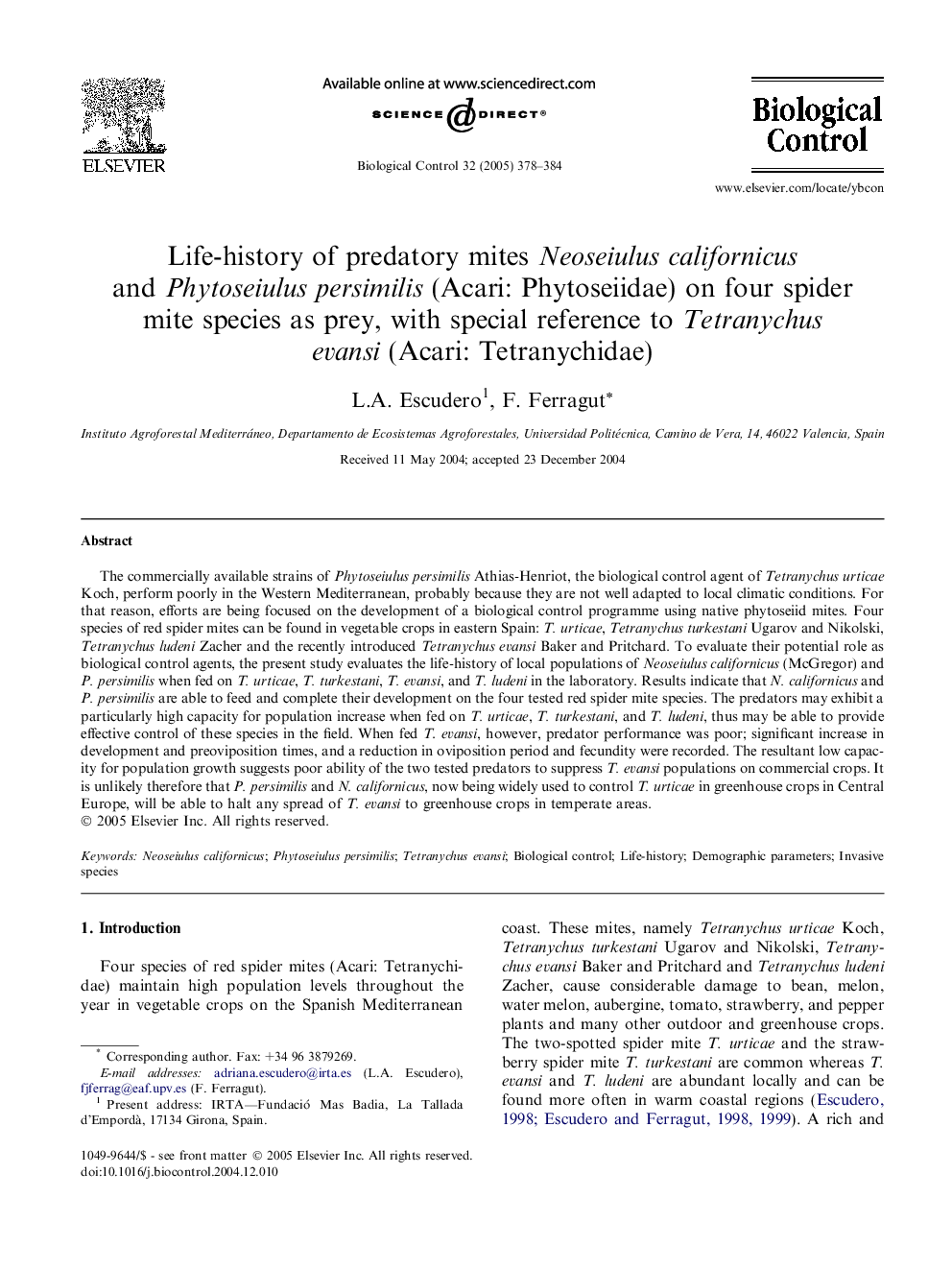| Article ID | Journal | Published Year | Pages | File Type |
|---|---|---|---|---|
| 9471942 | Biological Control | 2005 | 7 Pages |
Abstract
The commercially available strains of Phytoseiulus persimilis Athias-Henriot, the biological control agent of Tetranychus urticae Koch, perform poorly in the Western Mediterranean, probably because they are not well adapted to local climatic conditions. For that reason, efforts are being focused on the development of a biological control programme using native phytoseiid mites. Four species of red spider mites can be found in vegetable crops in eastern Spain: T. urticae, Tetranychus turkestani Ugarov and Nikolski, Tetranychus ludeni Zacher and the recently introduced Tetranychus evansi Baker and Pritchard. To evaluate their potential role as biological control agents, the present study evaluates the life-history of local populations of Neoseiulus californicus (McGregor) and P. persimilis when fed on T. urticae, T. turkestani, T. evansi, and T. ludeni in the laboratory. Results indicate that N. californicus and P. persimilis are able to feed and complete their development on the four tested red spider mite species. The predators may exhibit a particularly high capacity for population increase when fed on T. urticae, T. turkestani, and T. ludeni, thus may be able to provide effective control of these species in the field. When fed T. evansi, however, predator performance was poor; significant increase in development and preoviposition times, and a reduction in oviposition period and fecundity were recorded. The resultant low capacity for population growth suggests poor ability of the two tested predators to suppress T. evansi populations on commercial crops. It is unlikely therefore that P. persimilis and N. californicus, now being widely used to control T. urticae in greenhouse crops in Central Europe, will be able to halt any spread of T. evansi to greenhouse crops in temperate areas.
Keywords
Related Topics
Life Sciences
Agricultural and Biological Sciences
Agronomy and Crop Science
Authors
L.A. Escudero, F. Ferragut,
